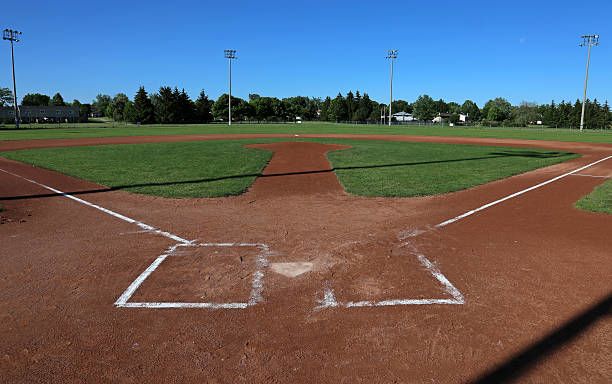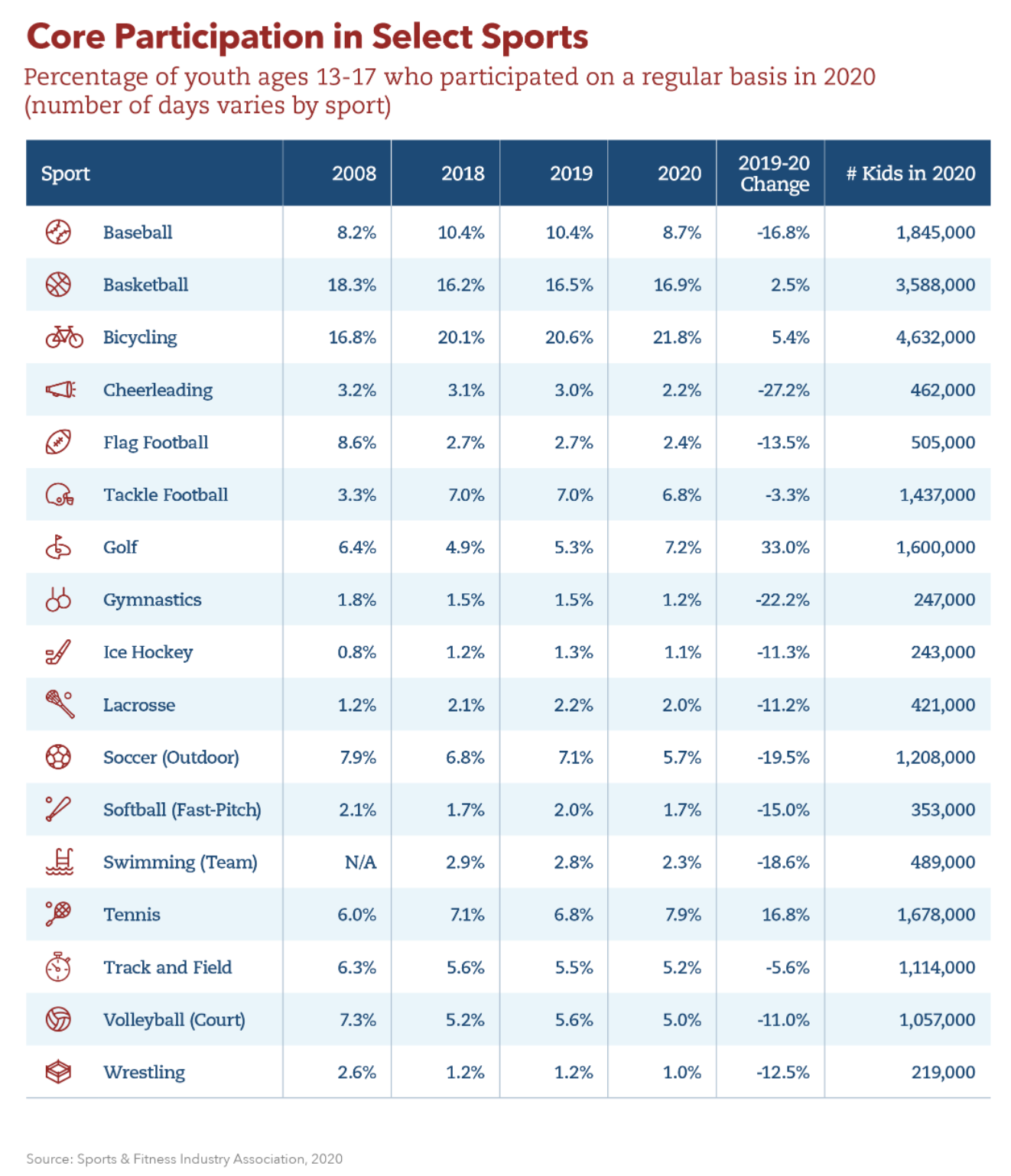"I almost quit basketball when my dad was my coach": Why youth sports are in decline
Participation in youth sports in the United States has fallen dramatically over the past several years

On the night of Friday, Feb, 25, a parent of a high school hockey player assaulted a player of the opposing team after a game in West Haven, Connecticut.
The game was the final Southern Connecticut Conference Girls Hockey Tournament game between Guilford and the West Haven-Sacred Heart Academy co-op team.
Christina Binkowski, 47, the wife of Guilford’s head coach, assaulted Cori Severino, a player from the opposing team. Severino was treated for injuries at the scene. Binkowski was arrested and charged with assault in the third degree and breach of peace.
CIAC executive director Glenn Lungarini and SCC commissioner, Al Carbone, both told CT Insider columnist Jeff Jacobs in a March 2022 piece that such incidents are increasing. And it points to a disturbing trend in youth and high school sports: parents are pushing their children too hard and too fast and interfering with games to the point where referees are hard to find.
In short, parents are the problem, suffocating the joy that once accompanied participation in youth sports.
Considering some of the sacrifices that investing in youth sports ensue, many parents insert themselves on the sidelines as a self-elected assistant coach or at home as personal trainers.
This causes a shift from a parent-to-child relationship to a parent-to-athlete relationship.
“I almost quit basketball when my dad was my coach because we couldn’t separate our player/coach relationship from and father/son one,” said former SUNY Plattsburgh basketball player, Owen Mitchell, 26, of Potsdam, New York.
“One time when I was 12 or so, I (messed) up during a modified game, and for two weeks my dad woke me up at 5 and drove me to the Potsdam State gym and put me through drills every morning before school.”
That shift in relationship siphons away the fun of playing sports.
“It’s sad that kids are not enjoying, are not being able to go out and play,” said John "Buddy" Chernovetz, commissioner for the International Association of Approved Basketball Officials Board 10 based in New Haven.
“Kids don't just go play a pickup game. There's no such thing as that anymore. If you go look at a playground there's nobody playing baseball unless they’re in a uniform," he said. "Even basketball, we’re used to seeing kids constantly playing. It’s diminished. You don’t see the pickup game. If you do, you see it in kids over 21 or 25. You see adults doing that, but you don’t see kids doing that.”
Chernovetz said parents pressure children to perform each game as if there is a college scout in the bleachers/stands. In some cases, children adopt their parent’s goals as their own.
That parental shift in living vicariously through children triggered another trend: a fetish over college scholarships. That trend has deepened over the past decade.
Two studies conducted in 2018 by the American Academy of Orthopedic Surgeons (AAOS) found that, “54.7% of parents encouraged their children to specialize in a single sport.”
In the 2013 documentary film “Going, Going, Gone…” 12-year-old Chad Knight stood as the epitome of a young athlete pushed into specialization.
His father, Craig Knight, said in the documentary that Chad’s average week consists of the following: two days with a hitting coach, yoga once a week, one hour with a pitching instructor, and three days of personal training. During Chad's youth baseball games, his father would call college scouts.
Knight is currently playing Division I baseball at Duke University.
This specialization has led to an increase in adult-level injuries in youth due to stress on specific muscle groups, tendons and ligaments.
Orthopedic specialist,Dr. Tom DeBerardino, said in the documentary that today’s youth sports participants may require advanced surgery as they get older to correct overuse injuries incurred long ago. For example, a total knee replacement surgery might be required if there is, “nothing left to fix,” of the joint.
The AAOS report found that 80% of parents who have hired personal trainers for their children, “were more likely to believe their children held collegiate or professional aspirations, and those children who received outside skill development had a higher injury risk due to the number of hours spent training and playing.”

Chad Knight, 2021 (Credit Duke Athletics)
Chad Knight, 2021 (Credit Duke Athletics)

Open Baseball field (Credit iStock)
Open Baseball field (Credit iStock)
An empty field at Bassett Park in Hamden, CT (Photo by Hamden Recreation Department)
Though a free or discounted college education is enticing for any parent, parents seem to not understand that academic scholarships are more plentiful than athletic aid.
The financial pressure that parents feel from impending college tuition statements can cause erratic behavior at practices, games, and even at home.
“The top response of kids when asked what their least favorite part of their season (was) ‘the car ride home with dad,’” Brown said in his video posted on YouTube.
After a poor performance or loss of any kind, some parents, particularly fathers, will rehash the game during the car ride home. That conversation may be triggered by frustration over the child’s performance not living up to standards set by parents.
A lesson about learning from mistakes may also be motivating factor, along with the competitive nature of parents seeking to live vicariously through their children.
Nevertheless, Brown stated in his video that kids need time and space after a game or competition. The more competitive the kid, the more time and space they need.
The post-game car ride home has turned into a space for parent to athlete conversations to propagate.
Anna Patel, 44, of Hamden said in an interview that she believes youth sports are out of control. Both her son, 11, and her daughter, 9, participate in travel baseball/softball teams. She states that some of the parental behavior at games is shocking.
In part, the out-of-control behavior could be from the financial investment that comes with AAU and travel teams.
“I would say for my son's baseball team, it's probably around $1,500,” said Patel. “And then about the same for my daughter too. And she’s not even in AAU.”
Patel explained that her daughter’s town-run team is expensive because it includes uniforms, extra workouts at private facilities and participating in tournaments—similar to an AAU program fee.
Patel said the benefit of the AAU level was tied to the level of competition and degree of focus in coaching.
“I think if my son didn’t love it, I wouldn’t force him to do it,” she said. “I just don’t see the value in that.”
The financial commitment is also a barrier for lower income children who are denied the benefits of being on a youth sporting team.
“Sports in general can exclude so many children because their families do not have the funds to pay to participate and for the required equipment,” said Sally Gerencser Anastos, a mother of two youth athletes in Cheshire, Connecticut. “Working parents can have a hell of a time getting their kids to practice and games because of work schedules and early practices. (It) excludes kids from being able to play.”
Participation in youth sports in the United States has fallen dramatically over the past several years. There are many reasons for the participation drop such as COVID-19, specialization, and decreased participatory joy.
This 2020 graph, published by the Sports & Fitness Industry Association, illustrates the decrease in core participation in youth sports from athletes from 6 to 12 years old. Of the 17 sports listed, 12 sports have decreasing participation.

Cheerleading and swimming experienced the biggest declines. A study by the American Academy of Pediatrics said that cheerleading caused 65% of “catastrophic” injuries suffered by female athletes.
However, the steady decrease in baseball is no shock to Chernovetz. “It's because the AAU leagues, youth basketball... it’s not fun anymore,” Chernovetz said. “They're not learning anything. Good people are playing, and the bad people drop out.”
A graph displaying statistics in participation from kids ages 13 to 17 years old shows that participation is decreasing more rapidly as athletes age.

These numbers represent the high school student primarily, these participation trends can be attributed to specialization of students looking more readily for a college scholarship.
Still, cheerleading is becoming less and less popular.
The figures all point to a single conclusion: participation is on a track for a permanent decline.
There could be one main reason for this—youth sports are no longer fun. The stakes of a college scholarship are too high for kids to understand. Though some kids adopt the desire from their parents and use it as fuel for their training, most kids cannot handle the immense amount of mental and physical pressure that their parents’ plant on them.
The only way to reverse this trend, according to Brown, is for parents to "release" their kid to the sport they play—and with that their expectations for their child.
